The Roman Empire Fall Given That the Eastern Portion Continued for an Additional Thousand Years
The history of Ancient Rome has three significant distinct periods: The Regal Roman Era ( 753 B.C – 509 B.C), The Republic Rome ( 509 B.C – 27 B.C), and The Imperial Rome ( 37 BC – 476 BC ).
The monarchs ruled the Regal Roman Era. While the Republican Rome was a new Roman Era, the Romans elected the governors.
Gaius Octavius Thurinus, also known as Octavian or Augustus, served as the first official emperor of the Roman Empire.
In 44 BCE, Emperor Julius Caesar was assassinated. After this, Augustus rose to power. The emperor established the Pax Romana, an era of peace during which the Roman economy, agriculture, and arts thrived.
Augustus restored the Roman republic, though he held all real power as Rome's first citizen.
Finally, the Regal Rome period began in 27 B.C. and lasted until Rome's fall in 476 A.D.
During this time, a supreme ruler oversaw the Empire alongside the elected senate. Romulus Augustus is the last true emperor of the ancient Roman Empire.
His dethrone marked the end of the Western Roman Empire as a political state and remained the transition from Antiquity to Medieval Period.
How were the Eastern and Western Roman Empires different?
The eastern Empire was more influenced by Greek culture and spoke Greek, while the western Empire spoke Latin.
Why did the East and West Roman Empire split?
The East and West Roman Empires were split to help stabilize the enormous Empire after a period of great crisis.
When did the Eastern and Western Roman Empire split?
In 284 A.D., the Roman Emperor, Diocletian, split the enormous Roman Empire into a Tetrarchy. It was broken again in 395 A.D. by Theodosius I.
The Crisis of the Third Century
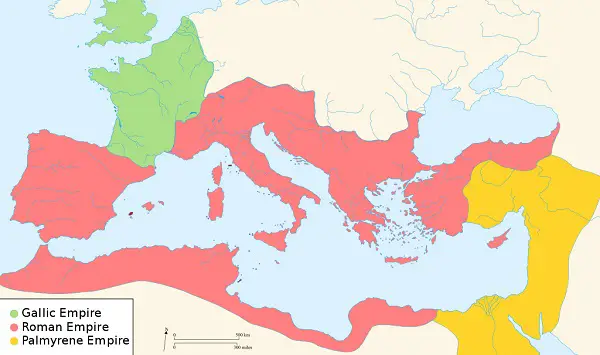
Rome faced numerous challenges in the third century A.D. They came from within and without the Empire. Only drastic economic, military, and political reforms appeared capable of averting collapse.
One of the pioneer Emperors in the history of Ancient Rome was Emperor Marcus Aurelius' reign. When ancient Rome flourished with peace and prosperity, a relevant period was called "Pax Romana."
According to several Historians, the end of Emperor Marcus Aurelius' reign marks the end of "Pax Romana."
The rulers who came after had little or no idea how to deal with the massive Empire and its growing problems.
As a result, Rome's fortunes began to deteriorate. Rome's economy was weakening.
Several factors contributed to Rome's economic decline in the third century A.D. Hostile tribes and pirates on the Mediterranean Sea disrupted trade and business outside the Empire's borders.
The Tetrarchy
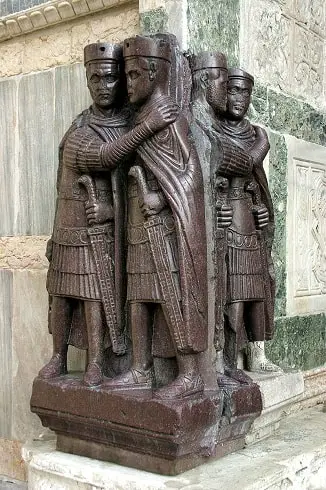
In 284 A.D. The Roman Emperor Diocletian split the enormous Roman Empire into a Tetrarchy. This was done to help stabilize the vast Empire.
Throughout the third century, the Roman Empire faced various civil wars, corruption, and other disruptions that brought the Empire on the verge of collapse.
The emperor Diocletian hoped that the Empire would be easy to govern and well managed after being divided.
He split the Empire between his two sons, Arcadius and Honorius, to reign as a unit. The belief was that the two emperors ruling each half would better lead them.
Diocletian wanted his sons to continue to bring glory to the Roman Empire as a whole. Unfortunately, this ended up being unsuccessful.
The roman Empire ended after it was invaded by Germanic tribes, barbarians, and other outsiders.
The Permanent Political Division
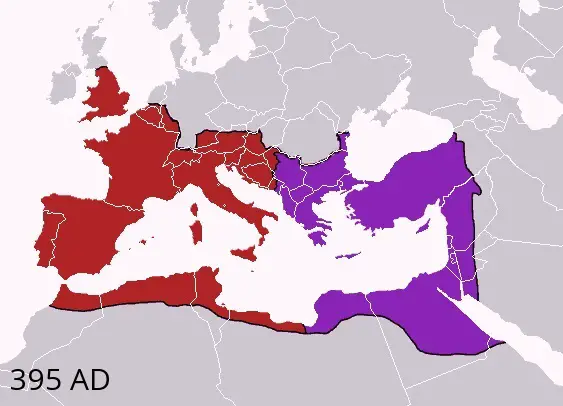
Theodosius I divided the Roman Empire once more in 395 AD. Four years after forbidding all religions but Christianity. Theodosius I decided to split the Empire again.
The western half was more influenced by Latin culture. In contrast, the eastern was primarily influenced by Greek culture.
The Roman Empire has been split, reorganized, and reunited multiple times by multiple emperors throughout history.
This division is also considered as the permanent political division. He gave the Western part to his younger son Honorius. Honorius was rumored to have mental health issues and was weaker than his elder brother, He is one of the tyrannical emperors.
Theodosius I gave the western part of the Empire because it was easier to rule. The Eastern region was given to his older son, Arcadius, Constantine.
Constantinople and the Byzantine Empire
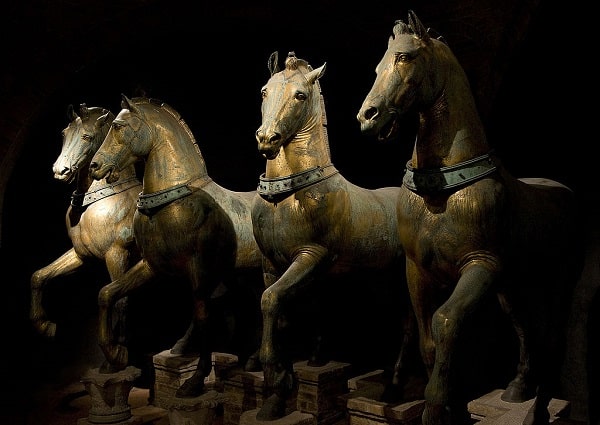
The Eastern Roman Empire is also known as the Byzantine Empire. The eastern half was initially ruled by Constantine I. The Byzantine name came from its largely Greek-speaking population.
The Byzantine Empire or the Eastern Roman Empire differed from the Western Roman Empire.
The most significant difference was that the Byzantines were Christians, and the Greek Culture influenced most of them, and their primary language was Greek.
In 330 CE, Constantine the Great, the founder of the Byzantine Empire and its first emperor, relocated the Roman Empire's capital to Byzantium and renamed it Constantinople.
It later grew to be the Empire's largest metropolis and a major commercial center.
Constantine the Great also legalized Christianity, which had previously been condemned in the Roman Empire. Christianity became a significant part of Byzantine culture.
Constantine relocated the Empire's capital and substantially modified the civil and religious constitutions.
In 330, he built Constantinople as a second Rome on the ruins of Byzantium, which was strategically located on the east-west trade routes, had a good vantage point for watching the Danube, and was close to the eastern frontiers.
Constantine also initiated the construction of the enormous fortified walls, which were later expanded and restored. "
Constantine elaborated on Diocletian's administrative reforms. He brought stability in terms of the coinage. The coinage was the gold solidus he introduced became a highly valued and stable currency.
While the Western Roman Empire fell in 476 CE, Constantinople became the Empire's largest city and a major commercial center.
The eastern Roman Empire reaped having nearly all of the most prosperous provinces. The population in the Byzantine empire was way higher than the western Empire.
The eastern Roman Empire is believed to be the home of almost 70 % of the total population, whereas the west half only comprised 30% of the entire population.
The eastern half had much more robust and defensible borders as well.
However, their one major drawback was their imperial neighbor to the east. The Sassanid Persian Empire repeatedly challenged and matched the Roman military power.
There has been a long warfare sequence between the empires, with one side always coming out on top. Neither side had been able to dominate the other entirely.
The Empire regained most of its military strength under Constantine and experienced a period of peace and prosperity.
After defeating the Visigoths in 332, Alexander reconquered southern Dacia, planning an expedition against Sassanid Persia.
Constantine replaced the single praetorian prefect, previously military and civic authority, with provincial prefects who exclusively had civil jurisdiction.
Four significant divisions arose from these Constantinian beginnings in the fourth century, and dividing civil and military officers lasted until the seventh century.
The Fall of the Western Empire & Rise of the Eastern Roman Empire
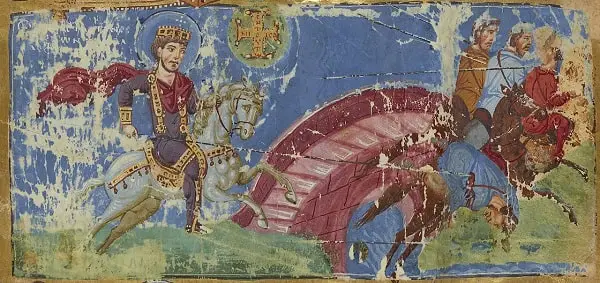
Constantine made much-needed reforms to stabilize the west rule, both the East and West as a whole, but he was unsuccessful.
After he died in 337 A.D., the western Roman Empire was seized by barbarian invaders after a series of invasions.
After Constantine, the Roman Empire was ruled by a small number of emperors. It was too enormous, and it was being attacked from all sides.
On the contrary, various events throughout history suggest that Constantine made the western Empire weaker. He prioritized the East in the development of infrastructure.
Constantinople imposed higher taxes in the West, which resulted in a crippled and weak economy. The rise of Constantinople led to the fall of Rome.
The strength of the eastern Empire caused invaders to turn their attention to the West, which was weaker and easy to conquer.
While the West's economy declined throughout the late Empire, the East's was not, especially as Emperors such as Constantine the Great and Constantius II began pouring vast quantities of money into the eastern economy.
The economic deterioration of the West contributed to the final demise of this section of the Empire.
Due to a lack of revenue, the State could not retain an expensive professional army and was forced to hire mercenaries.
As the central power eroded, the State lost control of its borders and provinces and essential authority over the Mediterranean Sea.
Roman Emperors kept outside forces out of control of parts of the sea, but once the Vandals took North Africa, the imperial authorities were forced to cover too much ground with too few resources.
Along with the economic stability, the Roman institutions crumbled. The majority of attackers demanded a third of the territory they captured.
While the Western Empire was being overrun by Germanic barbarians (the Ostrogoths took Italy, the Visigoths invaded Spain, the Vandals conquered North Africa, and the Franks conquered Gaul), the Eastern Empire continued to thrive.
The western Empire faced multiple consequences due to low trade and the constant pressure of war. Barbarian invaders such as the Huns and Goths continued to sabotage the Empire.
The Eastern Roman Empire tried to solve and minimize the problems in the West due to hyperinflation and Barbarian attacks.
The western Empire gradually crumbled until the fall of The Roman Empire. By 480 A.D.
The last true Roman emperor, the 15-year-old Romulus Augustulus, was overthrown by Odoacer, who declared himself as the king, not the emperor.
These historical events are marked as the End of the western Roman Empire.
However, the Eastern Roman Empire continued to live another 1000 years until 1453 A.D. as the Byzantine Empire in history.
Source: https://historyten.com/roman/eastern-and-western-roman-empire/
0 Response to "The Roman Empire Fall Given That the Eastern Portion Continued for an Additional Thousand Years"
Post a Comment